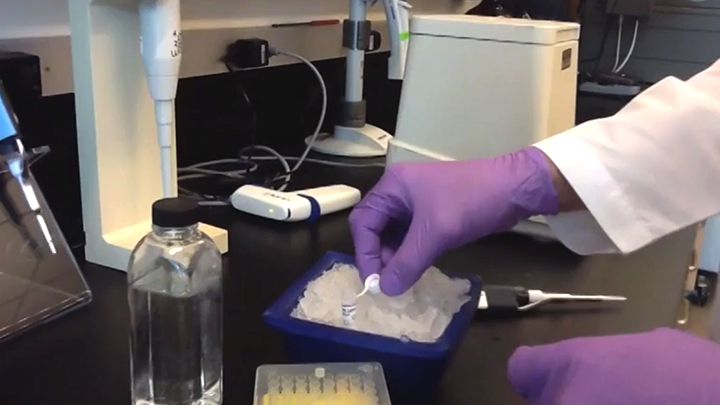DNA Ligation
Script
DNA Ligation is the formation of a covalent bond between adjacent DNA fragments, frequently a vector and a gene of interest.
Ligation is usually the final step before transformation in the cloning workflow.
DNA ligase may be used to join double-stranded DNA fragments with either blunt or cohesive ends to form recombinant DNA plasmids.
A DNA ligase catalyzes the formation of a phosphodiester bond between juxtaposed 5’ phosphate and 3’ hydroxyl termini in duplex DNA.
Ligation proceeds in three steps: Initially, the ligase is self-adenylated by reaction with free ATP (or NAD). Next, the adenyl group is transferred to the 5' phosphorylated end of the "donor" strand. Lastly, the formation of the phosphodiester bond proceeds through the reaction of the adenylated donor end with the adjacent 3' hydroxyl acceptor, accompanied by the release of AMP.
While T4 DNA Ligase is the most commonly used ligase for cloning, there are several options from NEB to choose from, including convenient master mix formats. For help with selection of a DNA ligase optimized for a specific end type and application, view our selection chart at NEBStickTogether.com. Visit CloneWithNEB.com for a full list of products available for cloning.
Related Videos
-

What are the best conditions for DNA ligation? -

Are some ligations more difficult than others? -

What molar ratios should I use for DNA Ligation?

